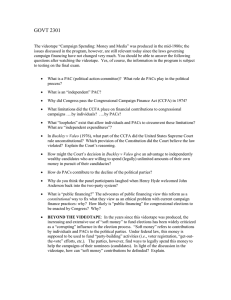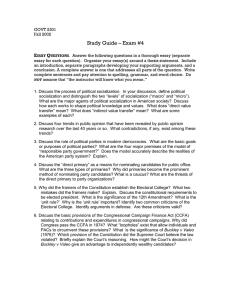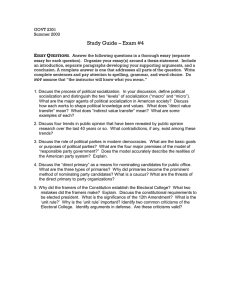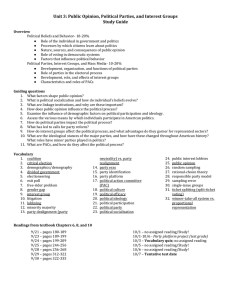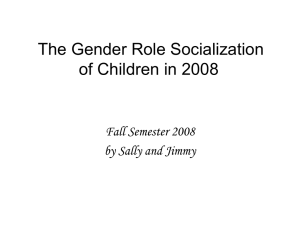– Final Exam Study Guide
advertisement
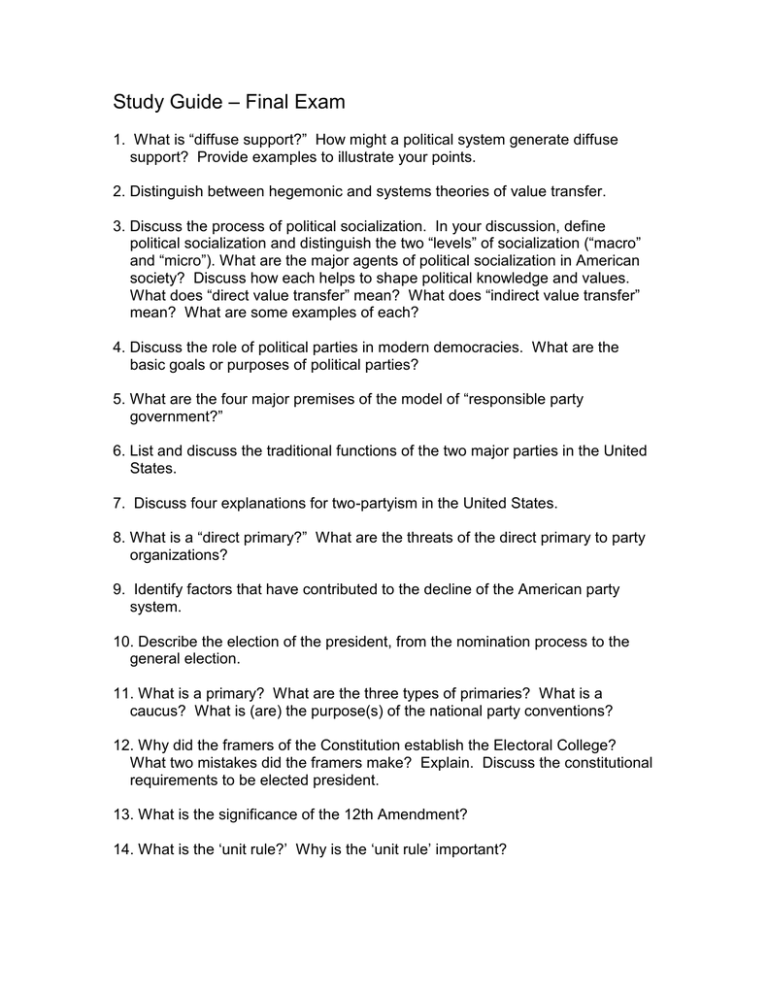
Study Guide – Final Exam 1. What is “diffuse support?” How might a political system generate diffuse support? Provide examples to illustrate your points. 2. Distinguish between hegemonic and systems theories of value transfer. 3. Discuss the process of political socialization. In your discussion, define political socialization and distinguish the two “levels” of socialization (“macro” and “micro”). What are the major agents of political socialization in American society? Discuss how each helps to shape political knowledge and values. What does “direct value transfer” mean? What does “indirect value transfer” mean? What are some examples of each? 4. Discuss the role of political parties in modern democracies. What are the basic goals or purposes of political parties? 5. What are the four major premises of the model of “responsible party government?” 6. List and discuss the traditional functions of the two major parties in the United States. 7. Discuss four explanations for two-partyism in the United States. 8. What is a “direct primary?” What are the threats of the direct primary to party organizations? 9. Identify factors that have contributed to the decline of the American party system. 10. Describe the election of the president, from the nomination process to the general election. 11. What is a primary? What are the three types of primaries? What is a caucus? What is (are) the purpose(s) of the national party conventions? 12. Why did the framers of the Constitution establish the Electoral College? What two mistakes did the framers make? Explain. Discuss the constitutional requirements to be elected president. 13. What is the significance of the 12th Amendment? 14. What is the ‘unit rule?’ Why is the ‘unit rule’ important? 15. How is the number of total electoral votes determined? How is the number of electoral votes awarded to each state determined? 16. Identify two common criticisms of the Electoral College. Identify arguments in defense. ********* 17. What is a PAC (political action committee)? What role do PACs play in the political process? 18. What is an “independent” PAC? Why have independent PACs become so significant in political campaigns? 19. Discuss the basic provisions of the Congressional Campaign Finance Act (CCFA) relating to contributions and expenditures in congressional campaigns. Why did Congress pass the CCFA in 1974? What “loopholes” exist that allow individuals and PACs to circumvent these provisions? What are “independent expenditures”? 20. In Buckley v Valeo (1976), what part of the CCFA did the United States Supreme Court rule unconstitutional? Which provision of the Constitution did the Court believe the law violated? Explain the Court’s reasoning. How might the Court’s decision in Buckley v Valeo give an advantage to independently wealthy candidates? 21. How do PACs contribute to the decline of the political parties? 22. What is “public financing?” The advocates of public financing view this reform as a constitutional way to fix what they view as an ethical problem with current campaign finance practices: why? How likely is “public financing” for congressional elections to be enacted by Congress? Why? 23. In the years since this videotape was produced, the increasing and extensive use of “soft money” to fund elections has been widely criticized as a “corrupting” influence in the election process. “Soft money” refers to contributions by individuals and PACs to the political parties. Under federal law, this money is supposed to be used to fund “party-building” activities (i.e., voter registration, “get-out-the-vote” efforts, etc.). The parties, however, find ways to legally spend this money to help the campaigns of their nominees (candidates). In light of the discussion in the videotape, how can “soft money” contributions be defended? Explain.
